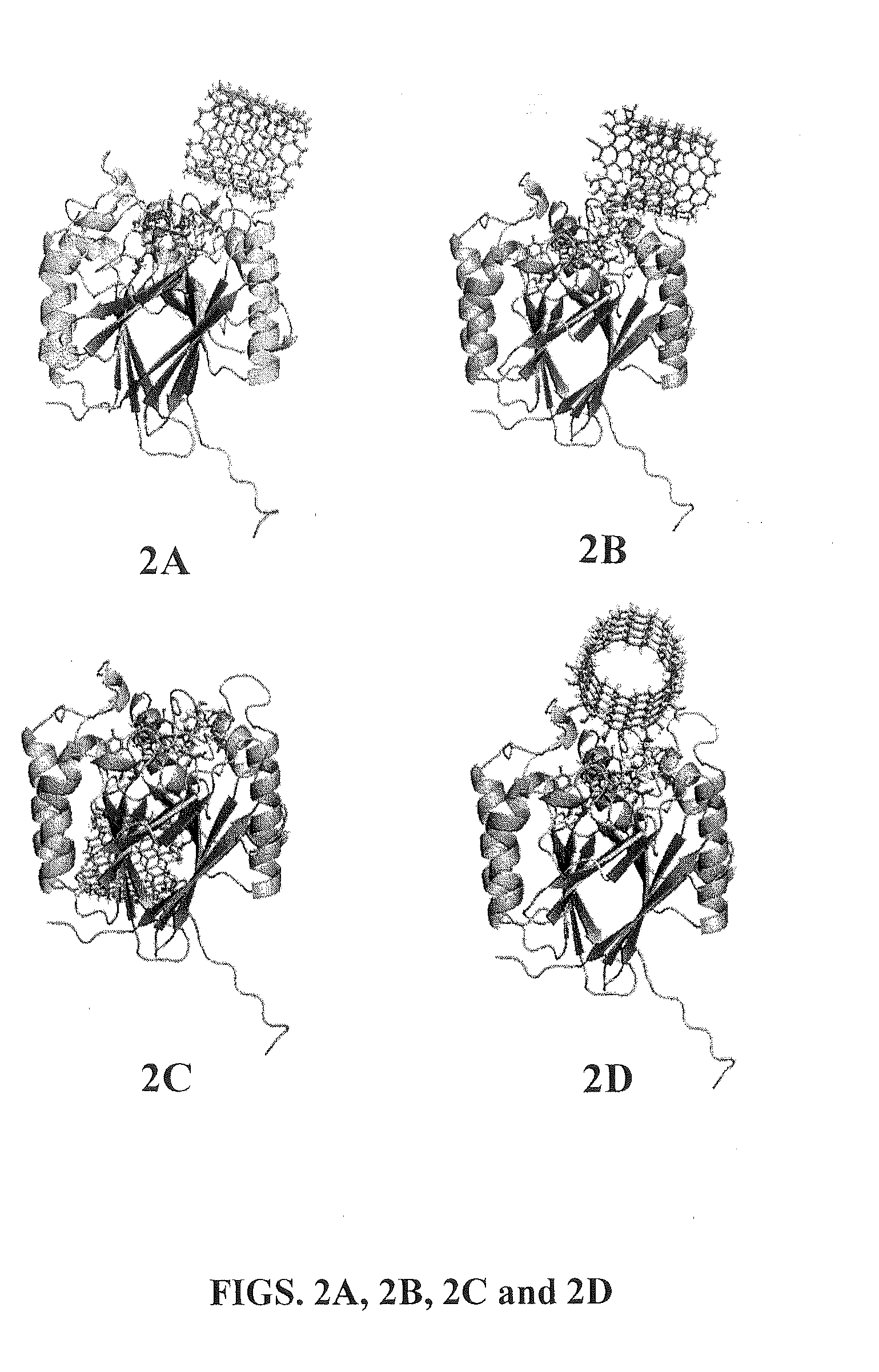Degradable carbon nanotube-containing biosensors and methods for target clinical marker detection
a biosensor and carbon nanotube technology, applied in the field of carbon nanotube-containing composites, can solve the problems of requiring skilled personnel for operation, increasing costs, and further complications,
- Summary
- Abstract
- Description
- Claims
- Application Information
AI Technical Summary
Benefits of technology
Problems solved by technology
Method used
Image
Examples
example 1a
CNT Based Biosensor Development and Detection of Bone Marker
[0057]Carbon nanotube posts grown on Si-wafers using a CVD process were obtained from the Department of Chemical and Materials Engineering at the University of Cincinnati. The obtained nanotubes were annealed at 400-450° C. for an hour to remove any amorphous carbon present. The annealed posts were peeled individually from the silicon wafer, mounted in non-conducting epoxy, and degassed to remove any bubbles. The individually mounted CNT posts were then allowed to cure under room temperature conditions for approximately 8-12 hours. The epoxy-mounted posts were polished on one end using silicon carbide polishing paper. Electrical contact of the exposed nanotubes with copper wire was made using a silver epoxy paste. Non-conducting epoxy was employed to insulate the region of contact between CNTs and copper wire followed by curing under room temperature conditions. The epoxy was polished sequentially using silicon carbide pape...
example 1b
Aptamer-Based CNT-Biosensor for Bone Marker Detection
[0065]Another biosensor was developed using an aptamer specific for C-terminal telopeptide. The gold-coated electrodes were treated with 5-50 mM of 11-Mercaptoundecanoic acid (MUA) for 2-18 hours, and were then treated with a 10-100 mM concentration of sulfo-N-hydroxyl-succinimide (NHS) and a 40-400 mM concentration 1-ethyl-3-(3-dimethylaminopropyl) carbodiimide) (EDC) mixed at equal volumes for 15-30 minutes. The sensors were treated with 0.5-1.0 mg / mL Avidin for 1-4 hours, 0.148 μg / mL-148 μg / mL C-terminal telopeptide-specific aptamer for 1-4 hours, and blocked with 1% BSA prepared in 10 mM PBS for 30-45 minutes. The developed biosensor was treated with C-terminal telopeptide for an hour under room temperature conditions. Afterwards, the sensor was rinsed in PBS and tested for change in electrochemical impedance across a frequency range of 300,000-0.1 Hz.
[0066]The Nyquist impedance spectra upon detection of various concentrations...
example 2
CNT Degradation Using Bone Marker—Tartrate Resistant Acid Phosphatase (TRAcP)
PUM
| Property | Measurement | Unit |
|---|---|---|
| Biodegradability | aaaaa | aaaaa |
Abstract
Description
Claims
Application Information
 Login to View More
Login to View More - R&D
- Intellectual Property
- Life Sciences
- Materials
- Tech Scout
- Unparalleled Data Quality
- Higher Quality Content
- 60% Fewer Hallucinations
Browse by: Latest US Patents, China's latest patents, Technical Efficacy Thesaurus, Application Domain, Technology Topic, Popular Technical Reports.
© 2025 PatSnap. All rights reserved.Legal|Privacy policy|Modern Slavery Act Transparency Statement|Sitemap|About US| Contact US: help@patsnap.com



